Happy Dragon Age Day to all Medieval II players, ModDB watchers, and Dragon Age fans! The Dragon Age: Total War Team (myself in particular) would like to present to all of you the Battle Map environments and climates of Dragon Age: Total War. In this article, we shall preview and explain the design choices behind the mod's twelve diverse and unique climates across Thedas. Do note that the climates, while largely finalized, are still subject to minor tweaks before release, and that the preview images shown are only a fraction of the gorgeous and awe-inspiring, or mysterious and haunting vistas and scenery. Likewise, ambient settlements are still a work in progress and shall be shown separately in the near future.
The first and most common climate is the temperate, grassy, hilly and moderately forested climate of most of Southern and Central Thedas. This climate comprises the bulk of the Free Marches, Ferelden, Nevarra and Orlais. Our primary design goal with this climate was to evoke a familiar landscape similar to the natural environments and levels of Dragon Age: Origins and Dragon Age: Inquisition along with a great deal of Dragon Age concept art, and likewise terrain and foliage which would serve well for a diverse blanket of regions:
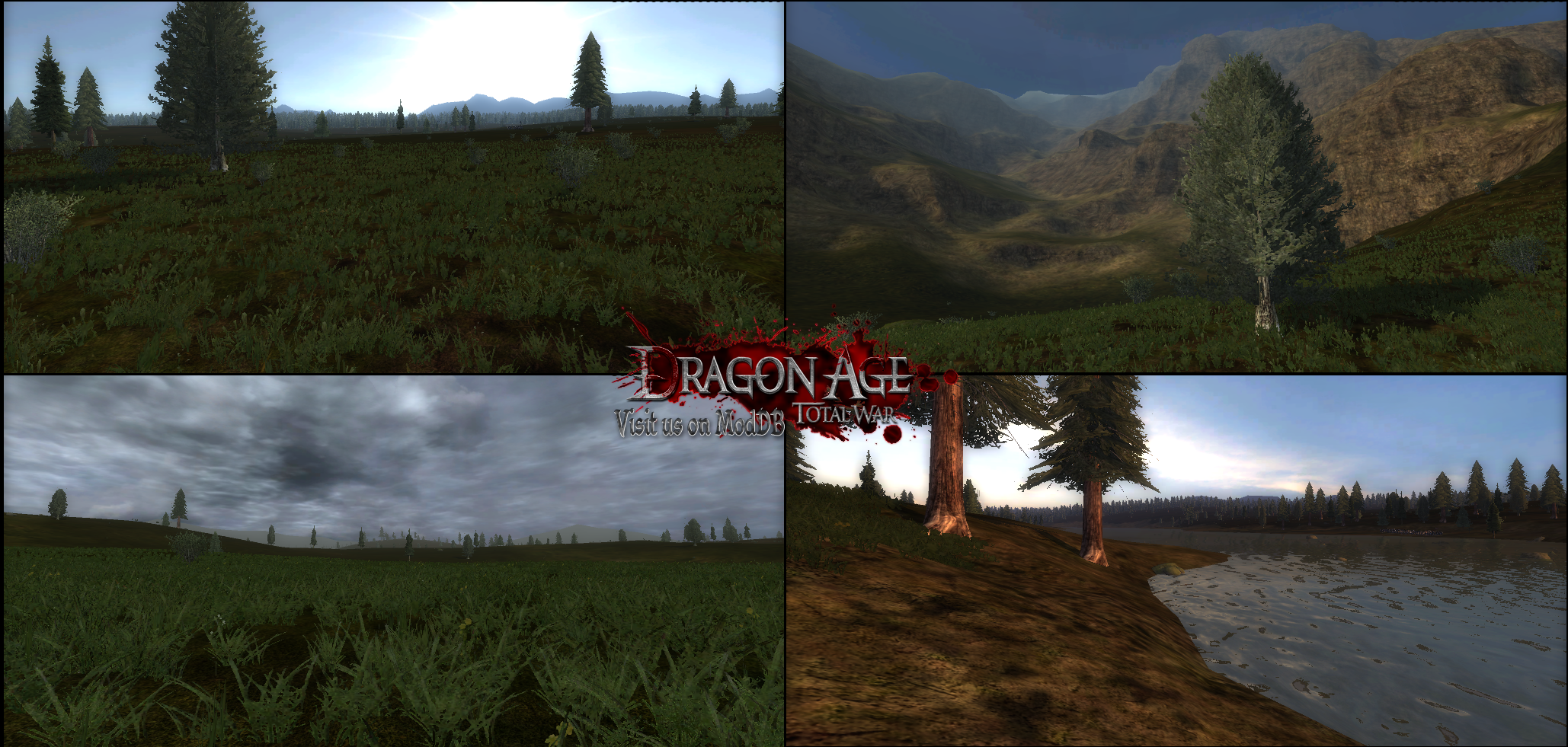
(Right-click on the images and click "Open Link in New Tab" to view at full size.)
We arrive secondly at the Ancient Forest climate. This climate covers some of the largest, deepest and peril-fraught forests in Thedas, stretching across the Tirashan, Brecilian, Arlathan and Planasene Forests along with the Arbor Wilds. These forests were likewise once the woodland refuges of the Ancient Elves, dotted with ruins from the time of Arlathan, woods which are likewise frequently passed through and used as sanctuary by Dalish Elf Clans, who frequently view the forests as sacred Elven ground to be defended from trespassers through arrows and blood if need be. The visual goal for this environment was to encapsulate the vibe of a mystifying and beautiful yet haunting and labyrinthine forest, with inspiration borrowed primarily from the Brecilian Forest of DA:O, and the Emerald Graves and Arbor Wilds of DA:I:
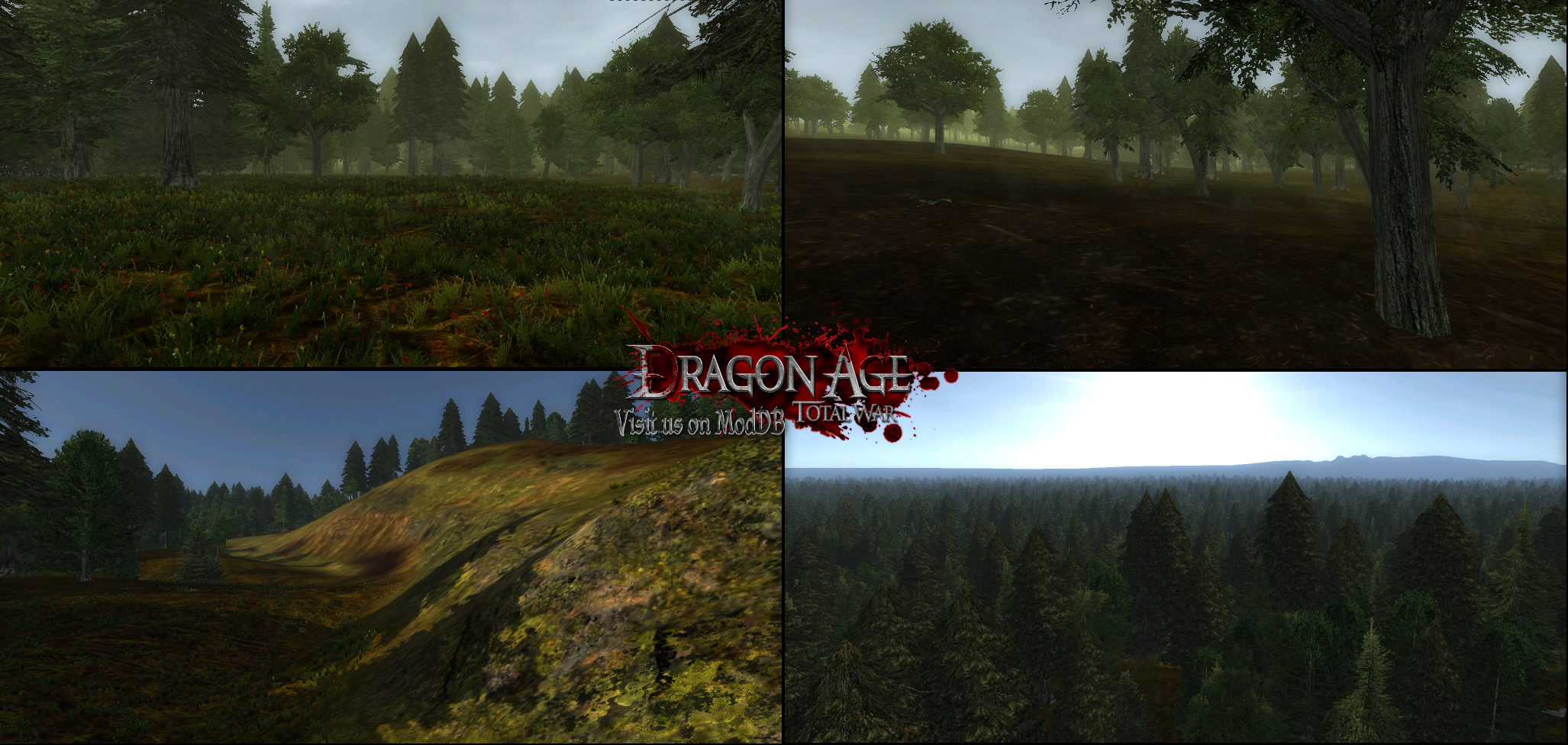
Following behind the preview of the Ancient Forests is the environment Frostback Mountains. Ever-dotted in frigid winter snow and ice, and rife with rugged and treacherous terrain, the Frostbacks are easily one of the most challenging biomes of Thedas to wage war in. Few soldiers find themselves prepared to deal with the harsh and unforgiving mountain passes and peaks, and many are certain to find death, be they caught in the midst of a relentless blizzard, thrown from the cliffs, snatched within the jaws of a High Dragon, or impaled upon the cold steel of their hated foes. Our inspiration for the Frostbacks came, as one might expect, from both the Urn of Sacred Ashes quest in Origins and the many times in which we see the Frostbacks in their frozen and majestic glory in Inquisition:
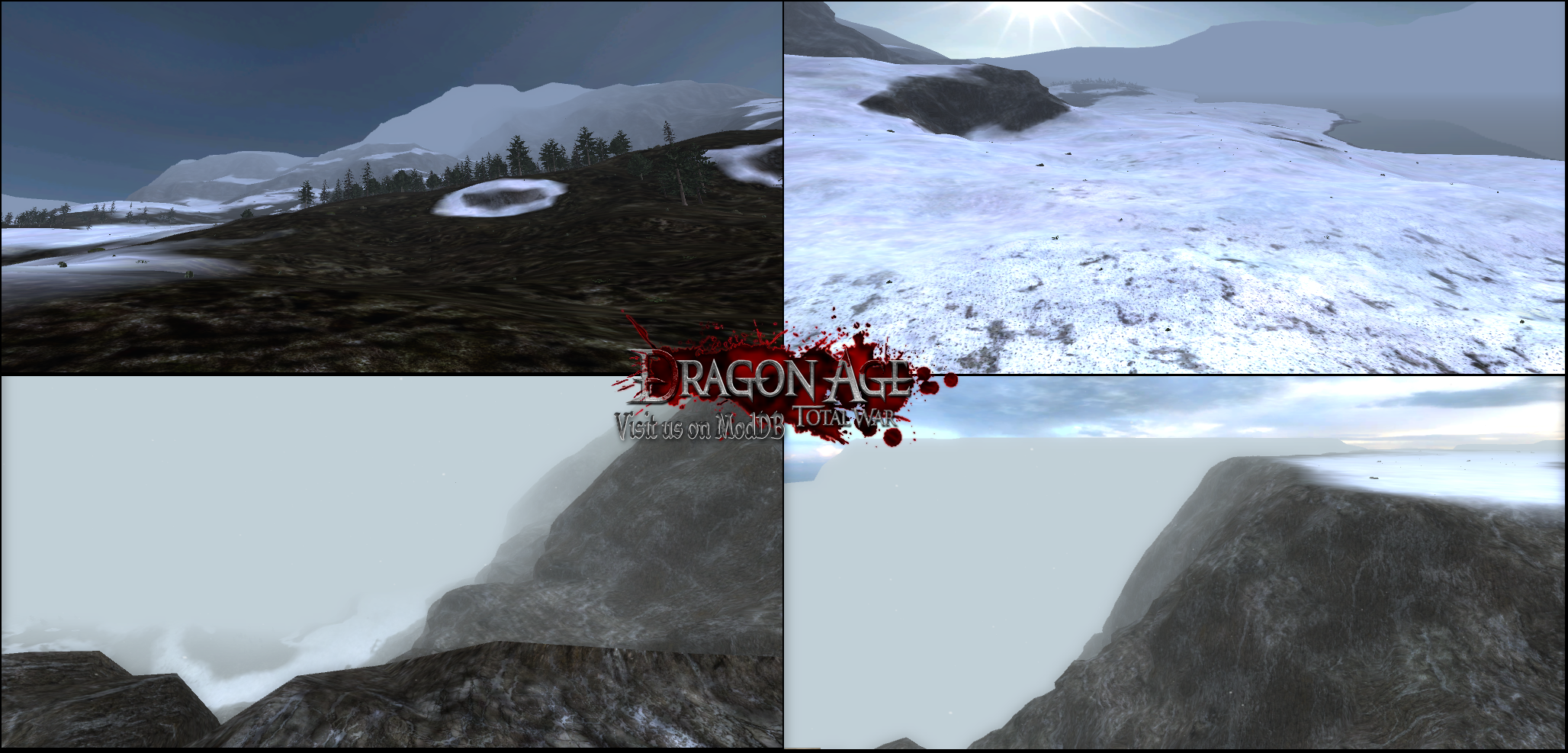
Fourthly, we come to the climate of the Western Approach of Orlais. The Western Approach was once a luscious and vibrant woodland until the advent of the Second Blight over eight hundred years prior to the Dragon Age. The coming of the Darkspawn tainted and ruined the once plentiful and healthy land, the Taint turning the land itself sick, until the grasslands, the forests, the lakes and the teeming flora perished, leaving behind nothing more than an environmental corpse, the harsh and agonizing desert. Yet the wastes of the Western Approach still boast a flicker of life unlike the Anderfels, and the Approach is frequently of interest to those scholars throughout Thedas fascinated by the unique plant and animal life now living here. Naturally, we sought to match Dragon Age: Total War's Western Approach up with it's appearance in DA:I:
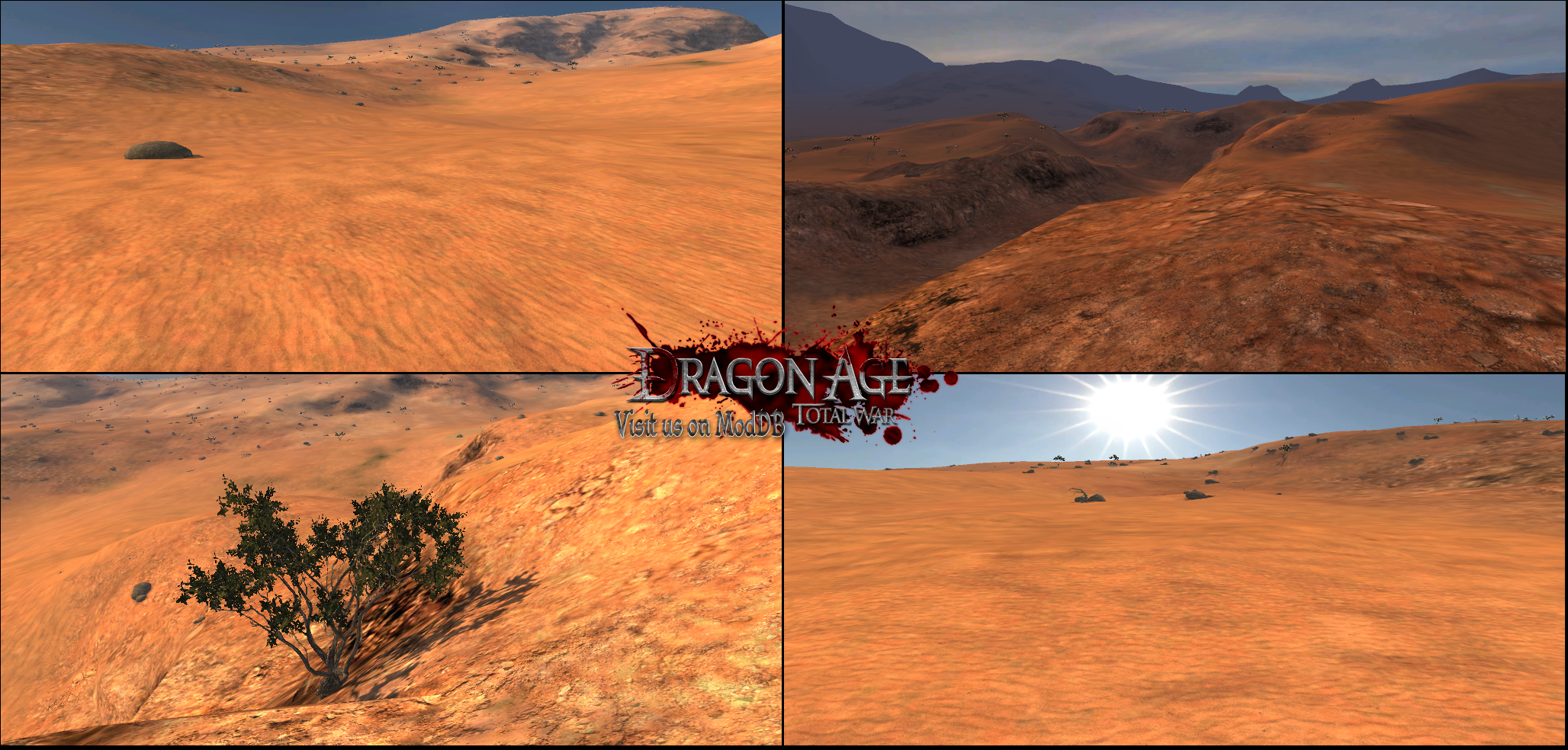
Following in the wake of the Western Approach, we come to the darkly mysterious and rather bleak climate of the Tevinter Imperium. Tevinter is a land torn and marred by over two-thousand years of war and strife. From Darinius' conquests and the birth of the Imperium, to the Blights, the Exalted March of Andraste and the Tevinter-Qunari War. The Veil is fragile in Tevinter and unnatural, magical phenomena frequently influences the likes of storms and murky fog. Our inspiration for Tevinter's climate comes exclusively from official BioWare concept art:

We would be loathe to visit Tevinter without likewise paying a visit to the nearby and perhaps even more heavily war-torn Island of Seheron. Seheron is a rather peculiar case, quite easily one of the most dangerous climates in Thedas, covered immensely in dense and treacherous jungles filled with poisonous flora, nevermind vicious, exotic and terribly savage wildlife which would tear a man to shreds or fill his veins with lethal venoms. This is to say nothing of the grim and bloody battles which constantly rage for control of the island between the Qunari, the Imperium and natives of Seheron. Perhaps the most haunting and mysterious of all things about Seheron is the fact that the island is almost perpetually covered in a thick fog, a fog spoken of in the tales of the Fog Dancers to be part of a powerful ancient curse. Very little official concept art exists for Seheron, and thus our inspiration for this environment is largely drawn from lore and Dragon Age game dialogue:
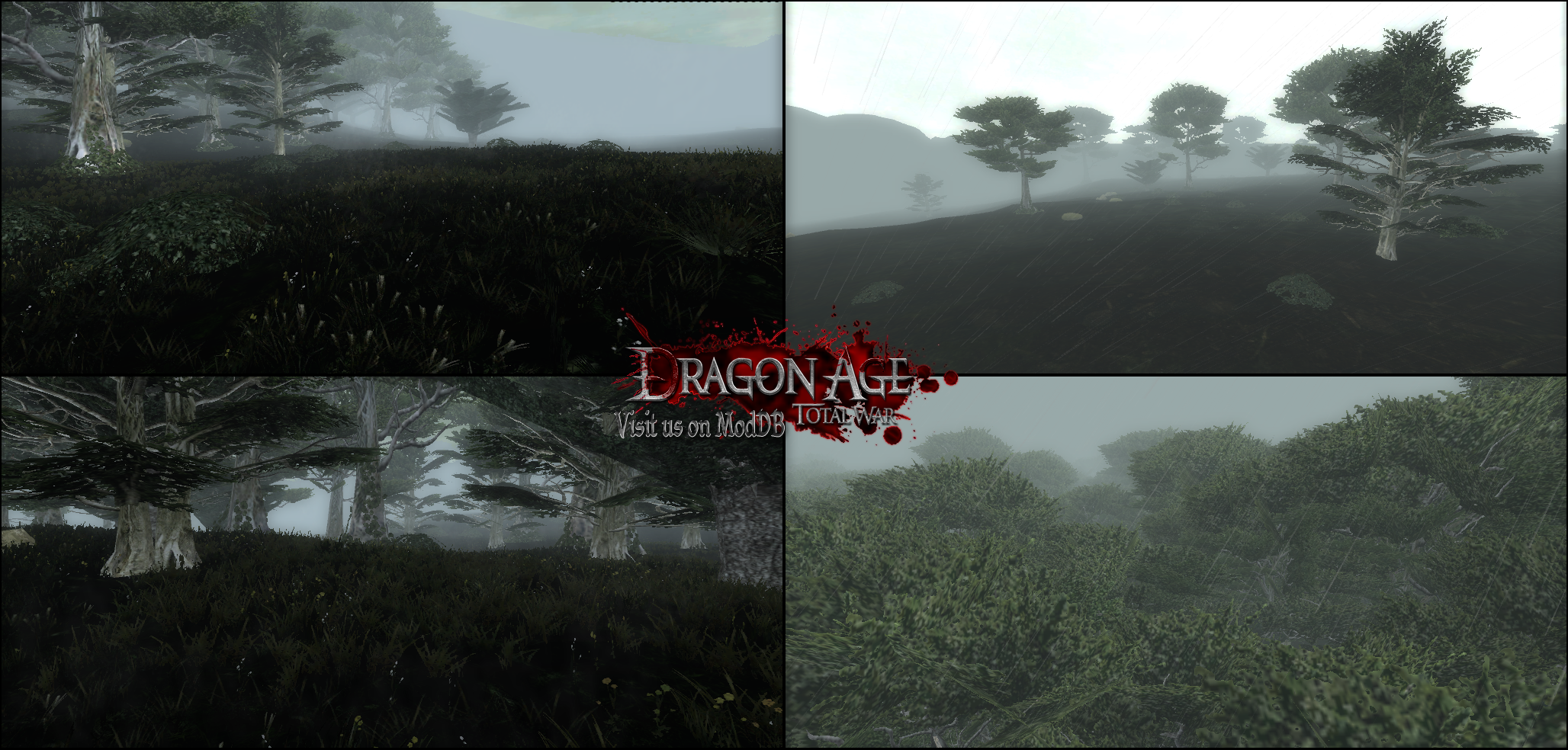
Yet to say Seheron is the only tropical climate in Thedas would be mistaken, for the regions of Par Vollen, Rivain, and the lesser islands of the Boeric Ocean are likewise covered in dense jungles or rolling tropical grasslands. While not quite as treacherous as the jungles of Seheron, these lands are fraught with plenty of their own risks. Within the jungles of Par Vollen, strange creatures known only to the Qunari prowl, and likewise within the jungles, grasslands, and coasts of Rivain, exotic beasts are hunted by the likes of the Lords of Fortune. Both Rivain and Par Vollen suffer from frequent and often violent storms along the coasts and further inland during the harsher seasons of the year. No official concept art exists for the environments of Rivain and Par Vollen, and thus our inspiration comes primarily from fan art, lore and our own interpretations:
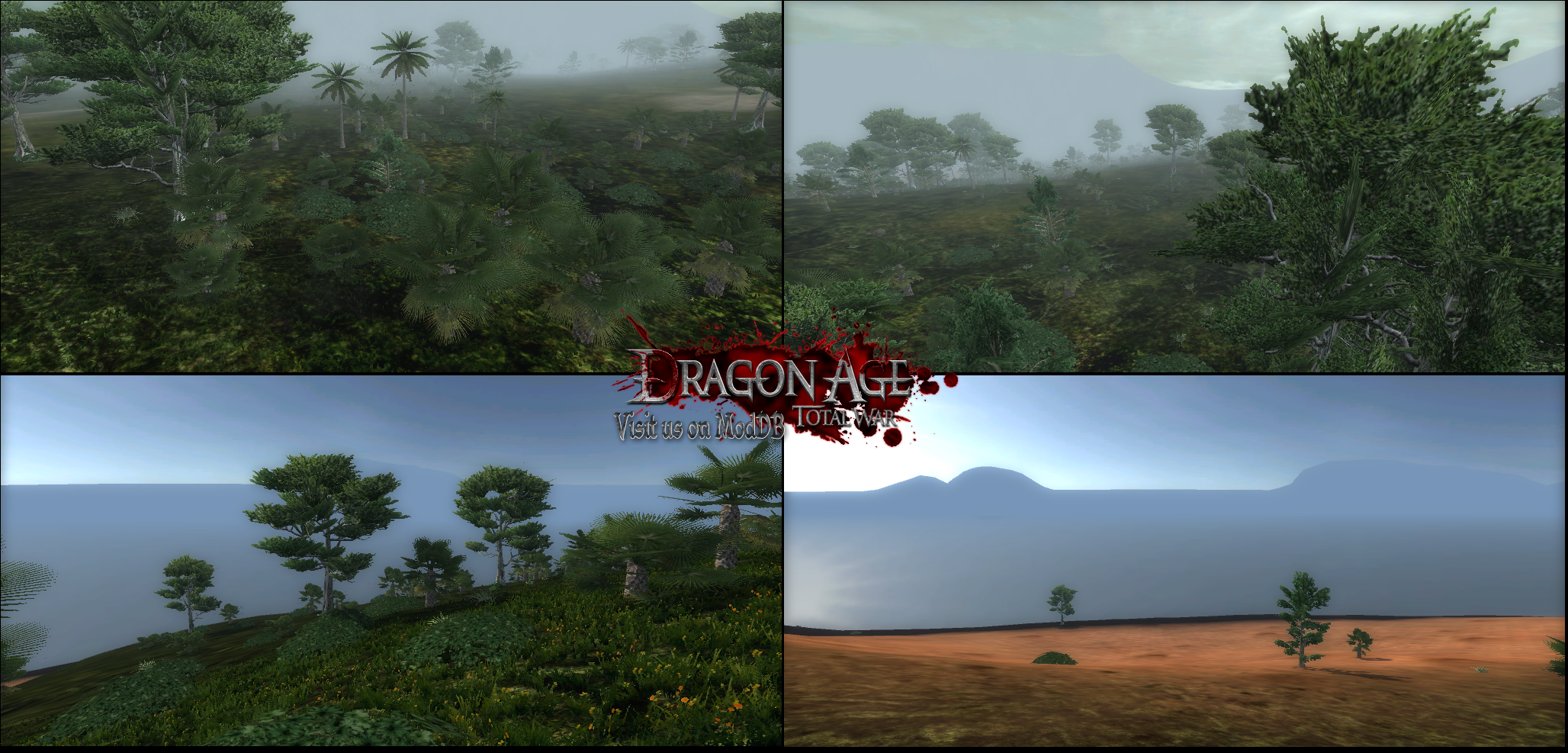
South of Rivain and it's humid tropical and sub-tropical climates is the often scenic and wonder-evoking dry temperate climate of Antiva. Despite the natural beauty of the Antivan forests, drylands and grasslands along the coasts and further inland, danger, treachery and a well-sharpened dagger potentially lurks behind every tree. The highways and trade routes are infested with bandits seeking to profit from plunder, the coasts beset by frequent raider and pirate activity, and even the serene forests are often passed through by hardened and bitter Dalish Elves who have no qualms about killing another of the "shemlen" for their gold. Idyllic beauty and death stride hand-in-hand in Antiva, a land where blood and lives are cheap. As no official concept art yet exists for the climate of Antiva, we have borrowed influence from fan art and our own ideas:
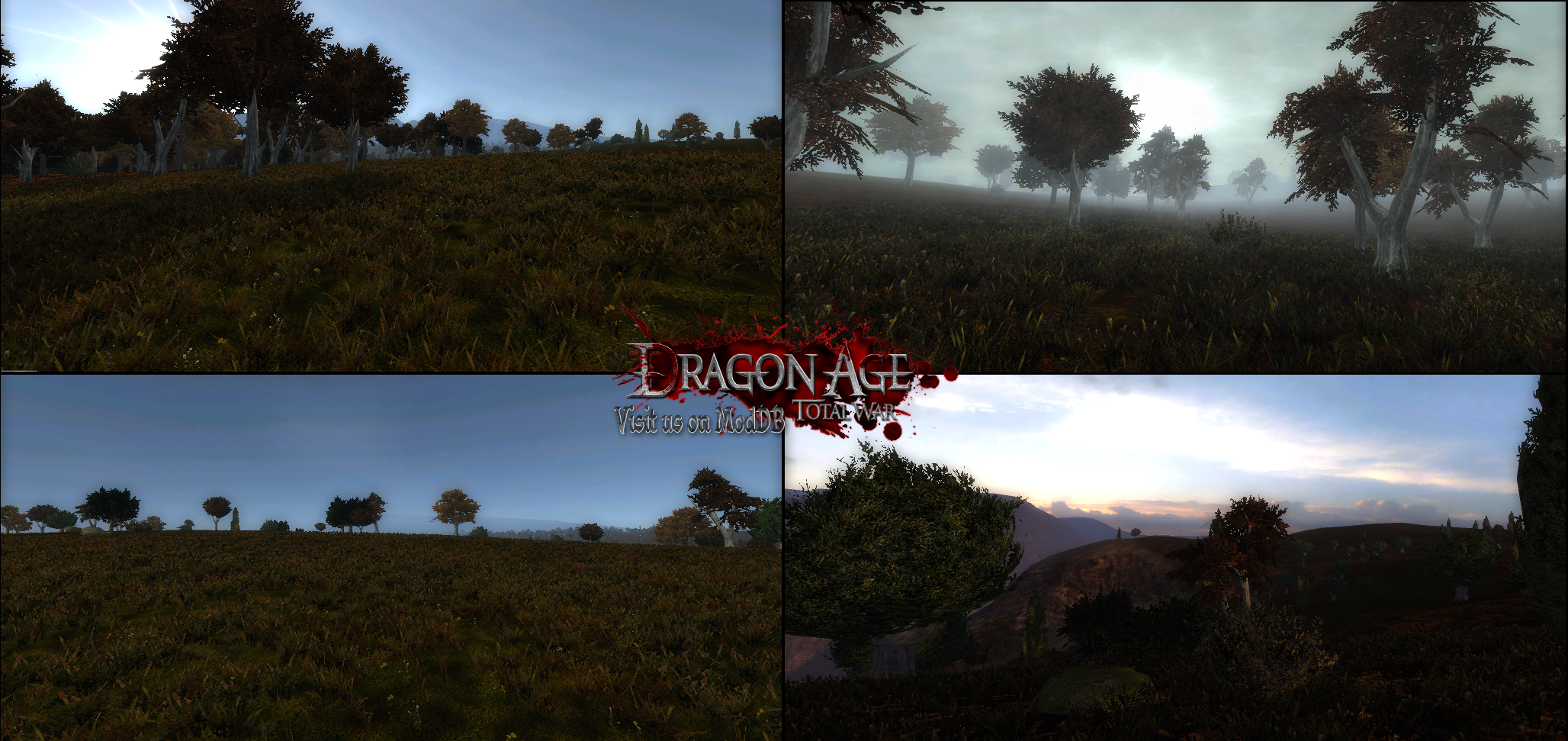
Just west of Antiva and south of the Tevinter heartlands lies the dreaded and haunted Silent Plains. The Silent Plains are a blighted wasteland, long devoid of any abundance of life. One of the largest and most terrible and costly of battles in the entire history of Thedas was once fought upon the Silent Plains, wherein the combined armies of the Tevinter Imperium, ancient Rivain, the Anderfels and the Ciriane peoples (the ancient ancestors of Orlais) were rallied by the Grey Wardens to destroy Dumat and to end the centuries-long nightmare of the First Blight. Almost every nation in Thedas has shed the blood of it's soldiers at least once upon the desolate Silent Plains, and this most unfortunately shows in the immensely fragile Veil. The Silent Plains are frequently stalked by the likes of stray Demons, convoluting both the planning and the execution of any battle to be fought upon the Plains. No official concept art exists for the Silent Plains, yet we borrowed influence partially from a fan mod for Dragon Age: Origins known as "Emissary", a short Origins mini-campaign I can certainly recommend:
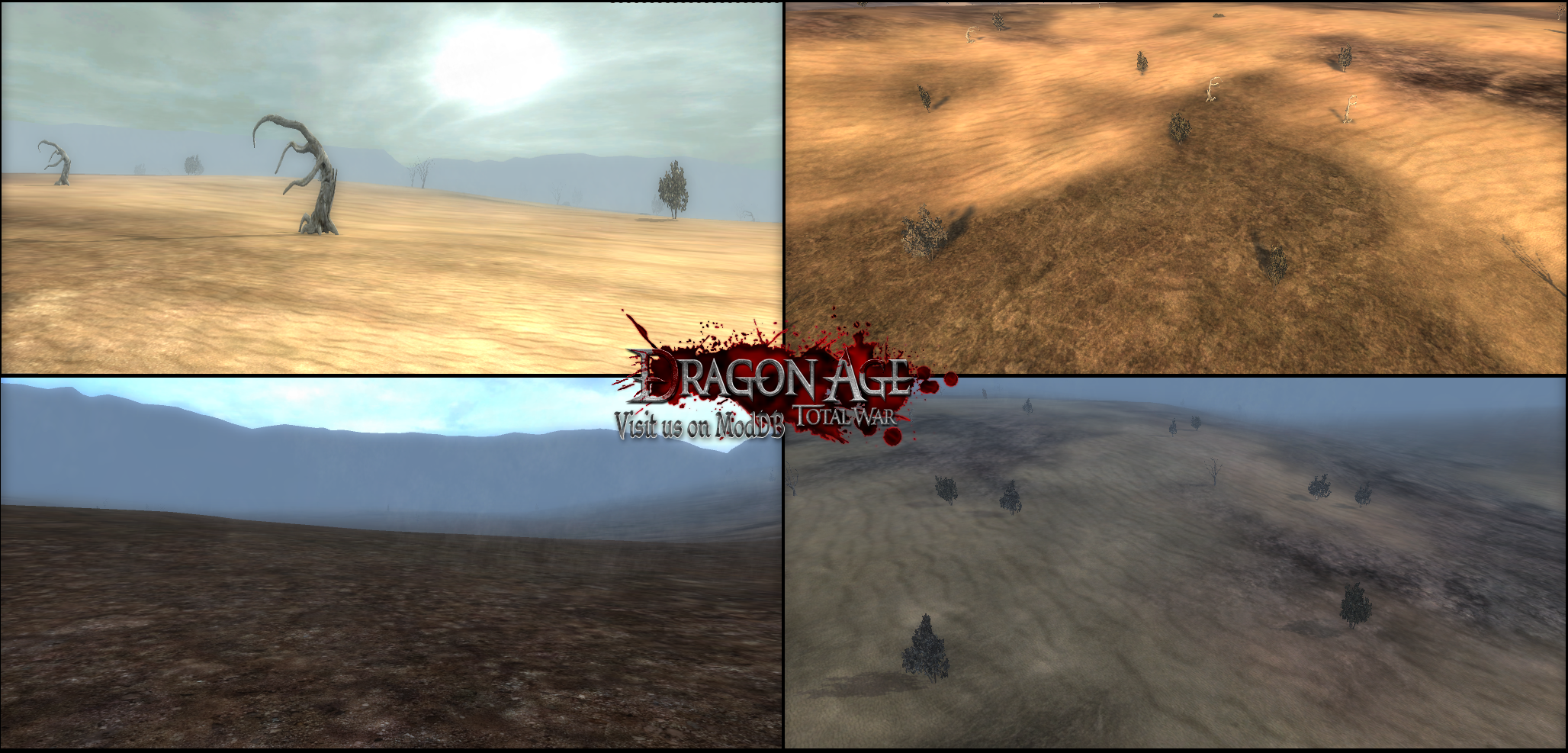
Alas, the Silent Plains are far from being the only Blighted Wasteland in Northern Thedas. To the northwest lies the even more feared and grim Anderfels, a land so desolate that in many parts of the wastes, not even corpses will decay there. For over a thousand years, the people of the Anderfels have struggled to survive not only against relentless Darkspawn assaults, but against the immense and almost impossible harshness of the desert itself. Blowing sandstorms are enough to fill the lungs of one caught unprepared with enough blighted grains of sand to kill, and the raw heat, or even the horrible chill of the nights will reap a terrible toll upon the will of any traveler or army to continue venturing through these Maker-forsaken lands. However, the brutality of the Ander climate has shaped a nation of men and women strong enough to rightfully be some of the most hardened and feared in Thedas and has also made the Anderfels the home of the Grey Wardens. No army of mortal men has ever dared to fully invade the poverty-stricken Anderfels since the ancient Tevinter Imperium. If the unforgiving land and it's hordes of Darkspawn alone do nothing to dissuade a potential invader, then the sheer, indomitable determination of the Royal Army of the Anderfels shall be brought to bear. Our inspiration for the environments of the Anderfels comes from a handful of official concept art and lore:
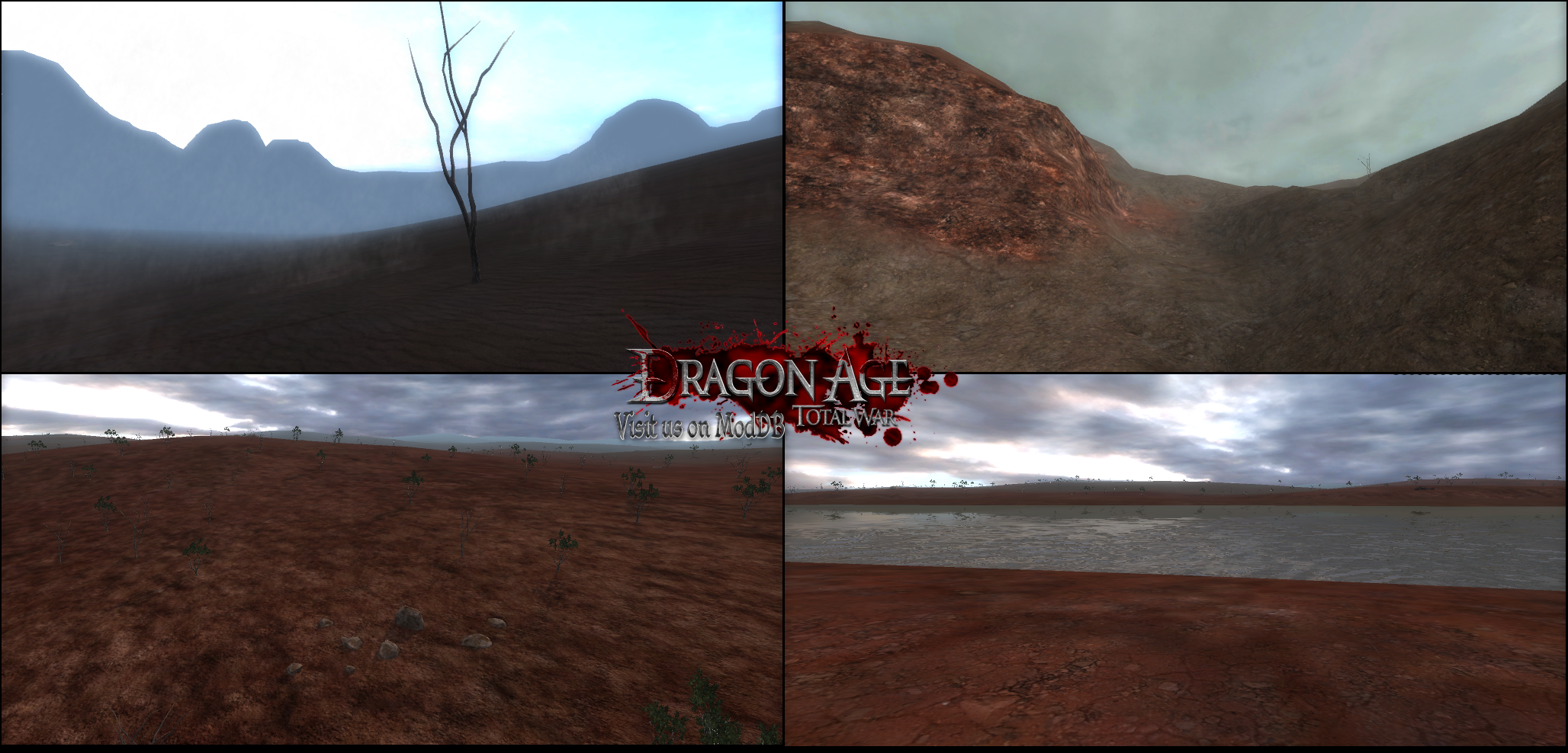
Venturing southwards beyond the far southern reaches of Ferelden, we come upon the swampy and heavily-forested Korcari Wilds, frigid, savage, haunted and forever accursed. The Wilds are home to countless vicious flora and fauna, and have never been explored in their entirety by any civilized nation, for exploration of the labyrinthine Wilds is all but impossible. Even the ancient Imperium at the height of it's power dared not to venture further south beyond the fortress of Ostagar, for almost no Magister, no matter how ambitious, powerful, maddened, or steeled by sheer hatred and magic-fueled malice would risk their Legions in a campaign within the swamps against the Chasind natives, hardened by a life of desperate survival. And beyond the Wilds lies the Uncharted Wastes, a frozen wasteland even the Chasind often dread. Our visual basis for the Wilds comes from a combination of the Korcari Wilds as seen in Origins, concept art related to the Wilds, and the Fallow Mire as presented in Inquisition:
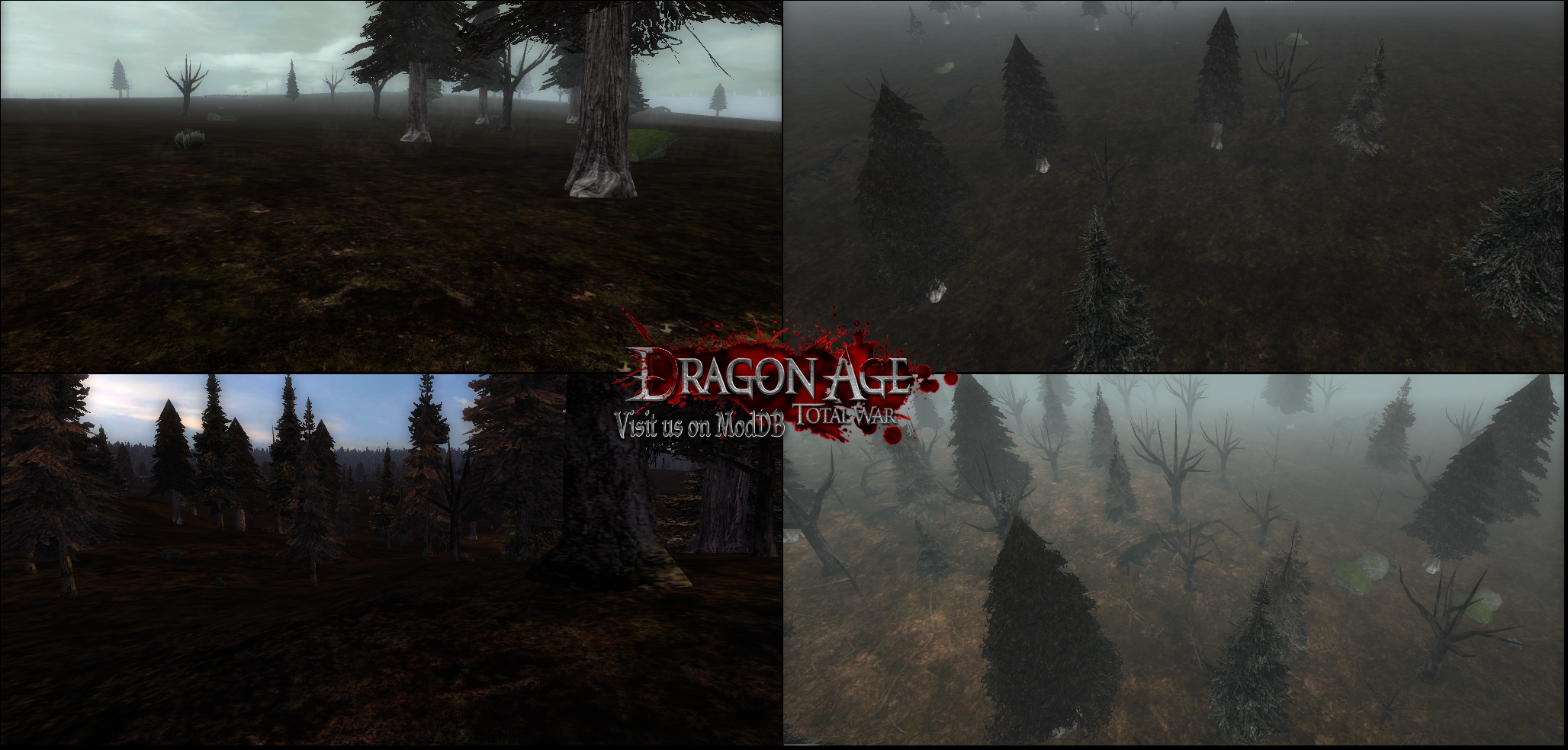
Last, yet certainly not least, we leave the surface behind for the Deep Roads, once the pride of the ancient Dwarven Empire, the beating heart of it's trade and flourishing culture, until the Darkspawn came, bringing down the horror, ruin and death of the First Blight upon the Dwarves, as Thaig after Thaig was lost. Eventually, the Kingdom of Orzammar sealed the Deep Roads almost entirely, and it has remained the nesting grounds of the Darkspawn ever since, whom are driven by the call of the Old Gods to seek out one of their number to be awakened and tainted into an Archdemon. Despite this, the Dwarves have made many attempts to reclaim lost Thaigs and glories within the Deep Roads, aided occasionally in the battles against the Darkspawn by the Grey Wardens. The Deep Roads themselves are a living world beneath the earth, teeming with life, tainted or not, lost treasures, ruins, resources and most importantly, the precious veins of lyrium. Dragon Age: Total War's Deep Roads environment has lighting which varies depending on the "time of day" for the sake of visual diversity, so that fighting in no part of the Deep Roads feels the exact same.
It is worth noting that the Battle Map camera does not clip with the "ceiling" in our Deep Roads environment, making the experience of fighting a battle beneath the surface both immersive and genuine.
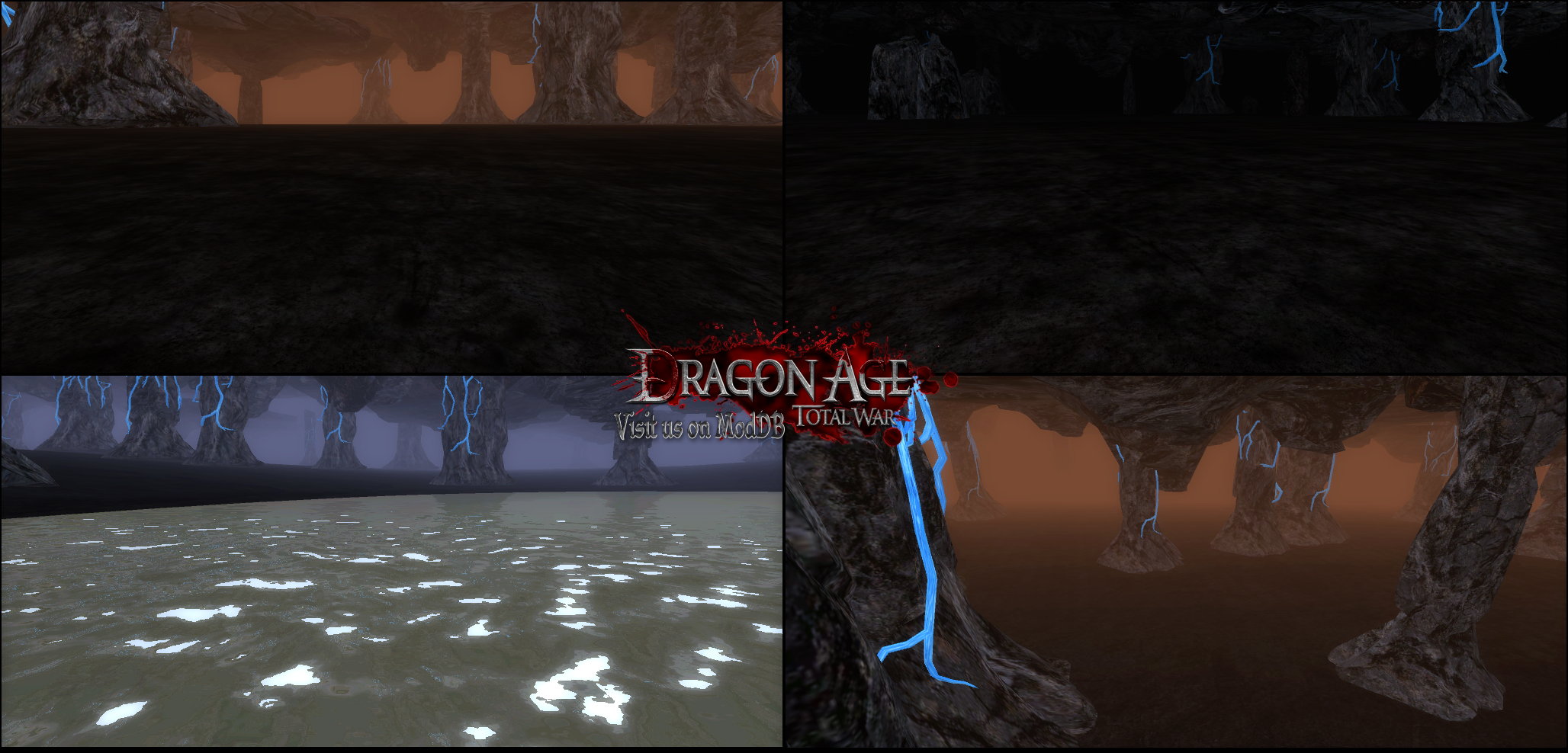
That concludes our preview and our description of Dragon Age: Total War's Battle Map environments. We look forward to releasing another article within the coming months diving into great detail regarding the mod's campaigns and the fully finished and polished map, and should all continue to go well in development, the mod's 1.0 is not too far out. Do not hesitate to join our Discord to ask questions, view Discord-exclusive previews, follow progress more closely and engage with our intriguing and friendly community!



Nutty
How awesome is it going to be to play battles in the Deep Roads! A last fading defence by the dwarves.
Nice work, keep it up!
Very nicely written explainer, and great attention to detail on the mapmaking!